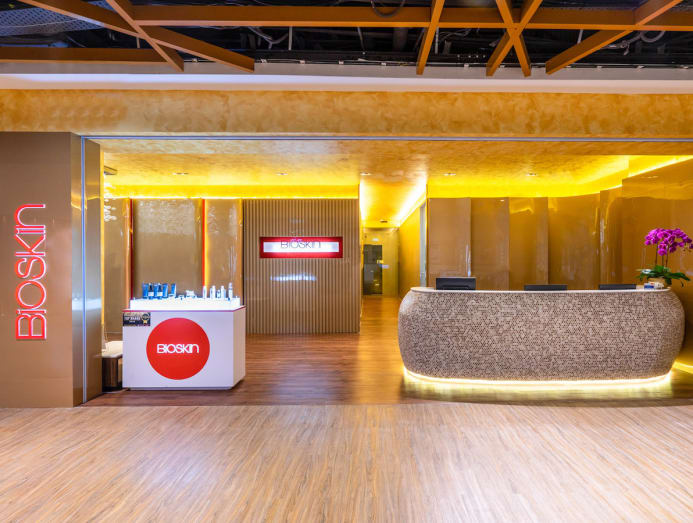Zits, be gone: Understanding the complexities of acne

Achieving clear, healthy skin involves adopting mindful lifestyle choices. Photos: Bioskin
You’ve likely encountered these common beliefs: “Only teenagers get acne”, “Popping pimples gets rid of them more quickly” or “Acne is caused by eating too much chocolate and greasy food”.
These notions often trivialise the complexities of acne and can be misleading, said Ms Chanel Tay, assistant training manager at Bioskin, an established beauty salon in Singapore. Acne, she explained, is primarily caused by factors such as excess oil production, clogged pores and bacteria.
“While cleansing helps remove surface dirt and oil, acne can still occur due to factors like hormonal imbalances and genetics. Over-washing or harsh scrubbing can irritate the skin and exacerbate acne,” she added.
Contrary to popular belief, acne affects individuals of all ages, including adults. “Hormonal changes, stress, diet and genetics can all contribute to acne development beyond the teenage years,” shared Ms Tay. “Hormonal acne is linked to the overproduction of sebum (an oily substance in skin glands), which clogs pores. Though often unavoidable, hormonal acne can be treated to prevent future breakouts.”

For individuals genetically predisposed to acne, Ms Tay recommends taking a proactive approach to managing acne. This includes selecting non-comedogenic products that won't block pores or worsen breakouts, as well as scheduling regular facial treatments.
As for popping or squeezing pimples, Ms Tay cautioned that this may worsen inflammation, increase the risk of scarring and spread bacteria, leading to more breakouts. “It’s best to leave pimples alone and allow them to heal naturally or seek professional treatment,” she advised.
When it comes to diet choices playing a role in acne development, Ms Tay said that chocolate has been unfairly blamed as a trigger for acne, but there is limited evidence linking chocolate consumption directly to acne.
Greasy foods themselves are also not the main culprit behind acne breakouts. According to Ms Tay, these foods are often eaten together with high-carbohydrate meals, which can trigger acne by promoting inflammation and influencing hormone levels.
Consuming simple carbohydrates like refined grains and sugars can cause a rapid spike in insulin levels. The increase in insulin prompts higher levels of androgen hormones and IGF-1 (insulin-like growth factor 1) in the bloodstream. Consequently, this hormonal surge accelerates skin cell growth and boosts sebum production, contributing to clogged pores and acne.
MAKING INFORMED DECISIONS TO IMPROVE SKIN HEALTH
For acne sufferers seeking a comprehensive treatment programme, Ms Tay recommends Bioskin’s Skin Purifying Face Treatment, which prioritises advanced technologies and specialised products over traditional extraction methods to tackle acne.
“Our non-invasive approach includes using ultrasonic exfoliation to clear debris from the skin and draw out excess oils, whiteheads and blackheads, followed by a high-frequency device to kill germs and bacteria that cause inflammation,” Ms Tay explained.
The key ingredient used in this 10-step treatment is professional-grade salicylic acid, which penetrates the skin to dissolve dead skin cells, regulate oil secretion and lighten blemishes.

To address acne concerns effectively, Ms Tay emphasised the importance of examining the factors that contribute to acne development. “While we cannot alter our genetics or hormone levels, we can manage certain lifestyle choices that influence acne breakouts,” she said. “This includes maintaining good hygiene practices and adopting a balanced diet.”
In addition, Ms Tay recommends establishing a comprehensive skincare routine that encompasses gentle cleansing, moisturising and the use of non-comedogenic acne treatments. Individuals should also prioritise adequate rest, regular exercise, proper hydration and effective stress management to boost overall skin health.
New customers can try Bioskin’s Skin Purifying Face Treatment at a special price of S$38* (before GST). Terms and conditions apply.
Individual results may vary.









